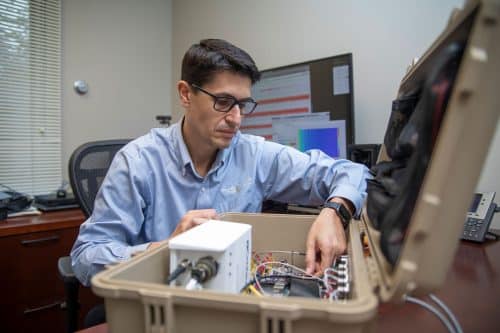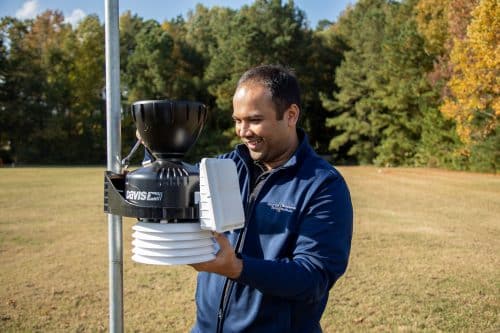The analysis technique is beneficial for detecting infrasound waves that often go undetected due to limited human hearing range

Infrasound waves have frequencies below 20 Hertz and often go undetected by humans as they can only hear sounds ranging from 20 Hz to 20 kHz. Waves in the infrasound range are produced by natural calamities such as tornados and earthquakes. Human-created sources of infrared waves are explosions, wind turbines, aircraft and many others.
Till now, many different methods have been devised to detect infrasound waves. One of them is the implementation of large arrays with hoses to separate hydrodynamic noise produced by the wind (hydrodynamic noise has frequencies comparable to those of infrasound, so wind noise must be suppressed to obtain useful measurements).
Such devices have limitations regarding where they can be used.
Now researchers at the Georgia Tech Research Institute (GTRI) have developed a portable wavelet technology-based infrasound analysis technique that uses small infrasound sensors for measuring low-frequency signals at different scales.
When applied to infrasound recordings, the technique helps separate wind noise from other signals of interest.

Applications include tracking small and large aircraft and studying effects on humans amongst others.
“We have been able to implement wavelet technology to get data more accurate than what has been possible using other methods of removing wind noise,” said Krishan Ahuja, Regents Professor and Researcher and head of GTRI’s Aerospace and Acoustics Technologies Division. “We have come up with a way to eliminate the hoses and reduce the size of the windscreen. This can all be done with signal processing.”
Due to smaller windscreens and wavelet denoising techniques, a signal is broken down mathematically and then isolates the wind noise before reconstructing the remaining infrasound for analysis.
The success of the above measurement method can be determined from the fact that infrasound signals gathered with a traditional 50-foot radius hose array were similar to that obtained with the wavelet denoising technique. This enabled the research team to use infrasound for guiding an aircraft, detecting a building demolition explosion several miles away, and even monitoring severe storms.

“By using the right number of sensors in an array, you can pinpoint the source of the infrasound,” Ahuja said.
The researchers further plan to collaborate with medical research teams to study infrasound effects on different parts of the human body to figure out symptoms of illness caused when exposed to infrasound.
“Explosions that are not large enough to cause traumatic brain injury can still create symptoms, particularly during repeated exposures,” said Rob Funk, a GTRI principal research engineer. “Studying this may help improve the health of military personnel who may be exposed to infrasound.”






